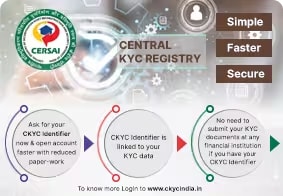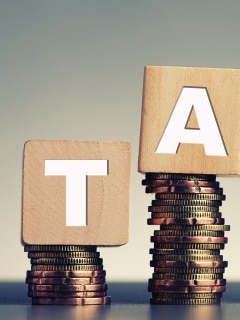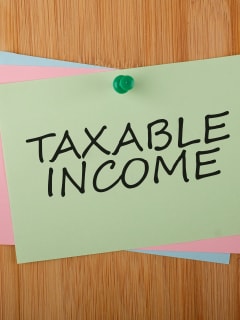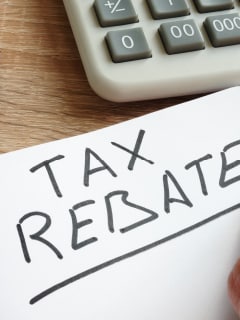Enjoy Zero Charges on All Commonly Used Savings Account Services
- About Us
- MD & CEO letter about the bank
- MD & CEO
- Our History
- Letter to Shareholders on the 1st Annual Report after Merger
- Letter to Shareholders on the 2nd Annual Report after Merger
- Letter to Shareholders on the 3rd Annual Report after Merger
- Letter to Shareholders on the 4th Annual Report after Merger
- Board of Directors
- Awards & Accolades
- News Room
- Investors
- Careers
- ESG
-
Customer care hotlineCall 1800 10 888
-
As per amendment in the Income Tax Rules, PAN or Aadhaar are to be mandatorily quoted for cash deposit or withdrawal aggregating to Rupees twenty lakhs or more in a FY. Please update your PAN or Aadhaar. Kindly reach out to the Bank’s contact center on 1800 10 888 or visit the nearest IDFC FIRST Bank branch for further queries.
-
-
FinFIRST Blogs
Savings Account
Understanding income tax slabs for various income groups
Summary: There are different types of income that can be non-taxable or taxable. There are different categories for the taxpayers as well, including senior citizens, women above 60 and children under 18 provided they have a taxable income, putting them into various income tax slabs as applicable. Read on to know more.
It’s that time of the year when tax saving schemes and income tax slabs start to creep into our conversations. How much taxable income do I have? How much will I be taxed? How much should I invest in tax-saving schemes? These are some of the questions that will be in our thoughts.
In this article, we will try and answer some of those questions that come to haunt us as the fiscal end nears. If you are a taxpayer, especially a new one, this should serve as a ready-reckoner. But first, let us understand what is meant by taxable income.
What constitutes taxable income?
This term refers to any earning that attracts income tax. The amount you are liable to pay is calculated as per the income slab the government has set for taxation purposes; for this reason, this is popularly also known as the income tax slab.
Please note, taxable income does not include the amounts that are allowed to be exempted under various sections of the Income Tax Act, 1961.
For instance, if you have bought a completed flat – or constructed a house – and availed of a home loan to buy or build it, the law will not consider the EMI paid for the year on the principal as taxable income, though this amount comes out of your salary/earnings.
To benefit from this, you must claim the deductions you are eligible for, but this is subject to a maximum of Rs 1.5 lakh on the total payable EMI in a year. You can also claim deductions (up to a maximum of Rs 2 lakh) on interest that piles up on the unrepaid loan amount every year, as well as on the stamp duty (but only once).
You get the picture. But salary is not the only avenue for earnings that people have, so now let us move on to the various other types of income that are taxed.
Types of taxable earnings/ income
Section 14 of the Income Tax Act 1961 broadly divides taxable income into five principal types of income; an individual can have multiple sources of income – even a salaried person. All these incomes need to be clubbed for taxation purposes.
These five income heads are:
· Income from salaries
· Income from house property
· Profits and gains of business and profession
· Capital gains
· Income from other sources
Let us look at these broad heads in more detail:
Income from salaries/wages
Everything a person earns from their employer falls in this group. So, if you are a salaried person, you will be taxed on the salary earnings. When you retire, the pension you receive will also be considered under this subhead and an amount will be deducted as per the applicable income tax slab.
If you are a senior citizen above the age of 75 years, your bank will be required to deduct tax on your income under Section 194P of the Income Tax Act if it is in the form of pension and interest income.
While in employment, the details of the salary component are mentioned in Form 16, which is submitted at the time of filing the income tax returns. (We will discuss the ‘salary slip’ in a subsequent section).
Incidentally, people are also paid wages, and it is not synonymous with salary. While salary is a fixed amount payable monthly to a full-time employee, wage is what is paid for a fixed period of work per day; these payments are usually daily or weekly.
Can wages be taxed? Yes, of course, if the amount earned falls in the income tax bracket.
· Income from capital gains
What is capital gains? These refer to income that an individual generates from selling an asset they own, such as property (land, house, apartment), ornaments, gold, etc. or maybe for the super-rich, a yacht.
Assets can also be bonds, stocks, debentures, or equities and other similar investment tools. The earnings from the sale of such assets are called ‘capital gains’ and are taxable under the Income Tax Act.
· Income from house property
Under the Income Tax Act, a ‘house property’ can be the residence of the taxpayer, or a building they own, or even the land attached to that building. Any shop or office space belonging to an individual also qualifies.
In other words, there is no difference between a residential area and commercial property under the Act. This is why ‘income from house property’ accrues from diverse types of properties, and is taxed accordingly.
Any rental income from this property will be deemed ‘income from house property’ for the owner. But what happens if the rented property is further sublet by the tenant? If there is any rental income from subletting a property, this income will be considered an ‘income from other sources’, or ‘profits and gains from business and profession’, and taxed accordingly.
Since the Act does not differentiate between residential and commercial property, any rental income from a shop (or even a car park attached to a building) will taxed as ‘income from house property’.
· Earnings from business and profession
Any activity for earning a profit (such as trade, commerce, or manufacture) is a business. Profession is also an economic activity, but it usually involves one person who has specialised knowledge and expertise in that activity.
A profession would cover people like lawyers, doctors, chartered accountants, consulting engineers, artists, independent interior decorators, singers, etc. – indeed, anyone who works solo as a freelancer in any field.
Under Section 28 of the Income Tax Act, the following will be deemed profits and gains of a business or profession and therefore taxable:
· Payments received for services by a professional or business
· Perks, whether converted into money or not
· Profit on transfer of the duty entitlement passbook scheme
· Profit on transfer of the duty free replenishment certificate
· Export incentives
· Interest, bonus, commission, or remuneration received by a partner from firm
· Income from other sources
In addition to the four categories of income listed above, any earnings that have not been taxed or not excluded from the total income by the assessee will be deemed ‘income from other sources’.
These include:
· Income from wins in horse racing, gambling, lottery, card games, crossword puzzles, etc.
· Income by way of dividends
· Income by way of annuity
· Income by way of pension received after the pensioner’s death – i.e., family pension
· Income by way of alimony
· Any amount that an employer receives from their employees as their contribution towards PF/ESI/ superannuation fund etc. but does not deposit this in the relevant fund
· Income by way of compensation received for termination of employment, or modification of one’s terms and conditions on the work front
· Income from plant and machinery or furniture etc. that an individual lets out on hire
· Composite income by way of rent from plant and machinery or furniture etc. along with buildings where such items are inseparable when letting, and the income cannot be taxed as ‘income from business or profession’
· Gifts from relatives and friends
· Income by way of interest on securities, bonds, debentures etc.
· Income by way of interest on savings bank accounts, fixed deposits, etc.
· Financial winnings as well as gifts won in game shows and TV programmes
Also read: https://www.idfcfirstbank.com/finfirst-blogs/finance/is-tax-refund-amount-taxable
READ MORE
Salary components
When we talk of ‘salary’, we are referring to a composite amount of money paid to an employed individual for their services for a given period, usually a month. This amount is made up of several components such as basic salary, various allowances like travel allowance etc., plus arrears if any.
These different components make up a salary structure, and are spelt out, along with deductions (if any) in the payslip or salary slip that is given to employees by their employers.
Let us understand what these components are:
· Basic: This is the starting component of earnings.
· Dearness Allowance: Also called DA, this is based on the cost of living, and aims to soften the impact of inflation on one’s pay. It can differ from city to city. DA is considered paid and taxable.
· House Rent Allowance: Popularly known as HRA, this amount is given to employees for renting a place to stay; it depends on the city where an employee is based. It is exempt from tax up to a certain limit
· Conveyance Allowance: This is given to employees to travel to work. It is exempt from tax up to a certain limit.
· Medical Allowance: Paid to an employee for medical expenses. Tax-exempt only if the employee submits medical bills.
· Leave Travel Allowance: Paid to employees to travel while on leave. Enjoys tax exemption for two in a block of four calendar years.
· Special allowances: This refers to performance-based allowances and are fully taxable.
Apart from the salary components, the salary slip also spells out the standard deductions, which are different from deductions for advances taken. The various standard deductions are:
· Professional tax: A small amount levied by certain states and is deducted from the taxable income.
· Tax Deducted at Source: Popularly known as TDS, it is based on the employee’s gross income tax slab, and employers deduct it from the employee’s salary on behalf of the government. However, salaried taxpayers can reduce this amount by investing in tax-exempt investments.
· Employee Provident Fund: EPF is the employee’s contribution to their provident fund. It qualifies for tax exemption under Section 80C of the Income Tax Act.
Below is an example of a typical payslip:
Employee’s name |
|
|||
Designation |
|
|
Department |
|
Month/year (for which salary is being paid) |
|
|||
|
|
|
|
|
Earnings |
|
Deductions |
|
|
Basic |
Rs 40,000 |
|
Professional Tax |
Rs 200 |
Dearness Allowance |
Rs 4000 |
|
Tax Deducted at Source |
Rs 10,000 |
House Rent Allowance |
Rs 20,000 |
|
Employee Provident Fund |
Rs 4800 |
Conveyance Allowance |
Rs 1600 |
|
|
|
Medical Allowance |
Rs 4500 |
|
|
|
Special Allowance |
Rs 28,000 |
|
|
|
|
|
|
|
|
Gross Earnings |
Rs 98,100 |
|
Gross deductions |
Rs 15,000 |
Net earning |
Rs 83,100 |
|
|
|
Investments, expenses for tax deductions
You can lessen the impact by claiming deductions under Section 80C of the Income Tax Act. This will reduce your taxable income, thereby reducing your overall tax liability. And you know what happens when you pay less tax: you get to keep more money for yourself!
These deductions have limits though, which changes for different purposes. Moreover, they themselves depend on many factors, two of them being specialised investments and certain expenses. Let us look at investments that qualify for deductions:
· Employee Provident Fund (EPF))
· Public Provident Fund (PPF)
· Voluntary Retirement Fund (VRF)
· Unit Linked Insurance Plan (ULIP)
· Equity Linked Savings Scheme (ELSS)
· Five-Year Tax Saving Bank Fixed Deposit
· Five-Year Post Office Time Deposit
· National Savings Certificate (NSC)
· Sukanya Samriddhi Scheme
· Senior Citizens Savings Scheme (SCSS)
· NABARD Rural Bonds
· Infrastructure Bonds
This apart, there are some expenses/investments under the same section that too are eligible for this tax deduction, as mentioned below:
· Premium payments on life insurance policies for self, spouse, or children
· Tuition fees for the education of one’s children, up to two kids
· If a housing loan has been availed of, the total EMI played in a year towards the clearance of the principal amount can be claimed for deduction
· Finally, a one-time payment of the registration fees and stamp duty for purchase of a house property
The overall deduction under Section 80C (along with deduction under subsections) allowed is up to Rs 1.5 lakh.
Section 80D of the Income Tax Act permits deductions on amounts spent by an individual towards the premium of a health insurance policy. This includes payments made on behalf of a spouse, children, parents, or self to a Central Government health plan.
Incidentally, in case you have taken an education loan from an authorised lender either for yourself or your kids, you can claim further deductions under Section 80 E.
Gross income vs taxable income
For calculating income tax, it is essential to have both gross total income and taxable income. Let us look at each:
Gross total income
Gross total income includes all earnings from all the five heads of income outlined above. It is the sum of all income before allowing for tax-saving investments.
Apart from the five income heads, some other incomes need to be added to get the gross income. These include any ‘income after clubbing provisions’ – i.e., income such as rental income that was not shown as taxpayer’s income, but someone else’s, like say, the assessee’s spouse.
Also, to be added are incomes and assets for which there is no satisfactory explanation.
We need to calculate the gross total income because of two reasons. First, the law requires the amount to be disclosed while filing one’s returns.
Second, to arrive at the taxable income – also called ‘total income’ – all deductions as spelt out under Chapter VI A of the Income Tax Act must be deducted from the gross total income. (Chapter VI A lists the different sub-sections of Section 80 of the Act that allow a taxpayer to claim deductions from the gross total income).
Taxable income
Taxable is straightforward; it is the base income upon which income tax is calculated and levied after deductions and exemptions provided under the Income Tax Act.
Taxpayers can claim tax benefits on investments in life insurance, FDs, provident fund (PF), children’s tuition fees, or the building or buying of residential property.
Not all income is considered taxable because many of these enjoy tax exemptions, such as HRA (as seen in the section above). Thus, these are not included under the head of taxable income and deducted from one’s income for taxation purposes.
Income tax slabs: New and old
When we talk of taxable income, one point we must remember is that everyone is not subject to the same rate of taxation; the top industrialist in the country will not be taxed at the same rate as a clerk in their organisation. That’s why we have income tax ‘slabs’, which prescribe various rates of taxation for various income brackets.
From 2020-21, the government introduced a new tax regime in addition to the prevailing old tax regime. So, for the financial year 2022-23 (assessment year 2023-24), taxpayers had the option of paying tax under any of the two tax regimes.
There are two main differences between the tax regimes:
· First, the new regime has more income tax slabs with lower tax rates
· Because of this, the new regime does not offer the major deductions and exemptions such as Section 80C, Section 80D, etc. that were available under the old tax regime, which offered up to 70 deductions and exemptions
Given below are the various tables for the Revised Income Tax Slabs and rates under the new regime for Financial Year 2022-23 (Assessment Year 2023-24) for the individual taxpayer:
Income Tax Slab |
Tax rate |
Up to Rs 3 lakh |
Nil |
Rs 3 lakh to Rs 6 lakh |
5% of total income that is over Rs 3 lakh |
Rs 6 lakh to Rs 9 lakh |
10% of total income over Rs 6 lakh+ Rs 15,000 |
Rs 9 lakh to Rs 12 lakh |
15% of total income over Rs 9 lakh + Rs 45,000 |
Rs 12 lakh to Rs 15 lakh |
20% of total income over Rs 12 lakh + Rs 90,000 |
Above Rs 15 lakh |
30% of income over Rs 15 lakh + Rs 1,50,000 |
Also read: https://www.idfcfirstbank.com/finfirst-blogs/finance/8-tax-saving-investment-plans
Income tax slabs for senior citizens
Then there are the rates for senior citizen taxpayers as given below. Under the old tax regime, this group was given a basic exemption limit of Rs 3 lakh – i.e., higher than that given to people below the age of 60 years.
However, this benefit of higher exemption is not provided in the new tax regime. This apart, there are income tax slabs for ‘super-senior’ citizens as well – i.e., those above the age of 80.
Under the old tax regime, individuals aged 80 or more enjoy a basic exemption limit of Rs 5 lakh. This benefit has been done away with under the new tax regime.
Income tax for women
You may wonder, what about women? Are they expected to pay income tax, and if they are, do they get rebates?
The answer would be yes. They are expected to pay income tax, just like any Indian citizen or foreigner with an income in India, and there are no special exemptions for them on account of being female; in fact, the income tax slabs are the same as those for men, both old and young.
Women did enjoy greater tax exemptions than men prior to 2012-13, but as of now, there is no distinction made between the two regarding tax rebates and exemption limits. In other words, income tax slabs are the same for women as it is for men.
Income tax for children
Minors – individuals below 18 years of age – too have to pay taxes. Section 64(1A) of the Income Tax Act says any payment above Rs 1500 per month must be clubbed with their parental income and taxed accordingly.
If both parents earn, the minor’s income will be added to the earnings of the parent whose income is more. If the parents are divorced, the kid’s income will be added to the income of the parent with custodial rights.
In the case of orphans, a separate ITR must be filed.
Income tax for businesses
So far, we have discussed income tax for salaried people, but that is just one type of income. What about income from businesses?
If you have a business, one might assume you are already aware of the tax structure for businesses and traders. But if you are planning to start one, this is one area that should be on top of mind. The first thing to know is that taxable business income is calculated under two systems: the normal provision and presumptive taxation.
As per the normal provision, taxable income is what you get after deducting all expenses, including the cost of sold goods, from your total turnover. The presumptive tax system is applicable only for businesses with sales of over Rs 2 crore; here, taxable income is a fixed percentage of total sales.
So, if you are a one-person small business (say a shopkeeper) with sales under Rs 2 crore, you will be subject to the normal provision of taxation, which involves income tax slabs.
Income tax slabs for small business owners fall in three categories: those under 60 years, the older lot aged 60 to 80, and finally those older than 80. Your income tax slab rate will depend on which category you belong to.
Let us assume you are under 60 years; in that case, you will be taxed at the following rates:
· Nil – for incomes up to Rs 2.5 lakh
· 5% – for incomes in the Rs 2.5 lakh to Rs 5 lakh range
· 20% – for incomes in the Rs 5 lakh to Rs 10 lakh range
· 30% – for incomes above Rs 10 lakh
Surcharge and cess
This apart, there is also a provision for surcharge – in case your annual income is between Rs 5 lakh and Rs 1 crore – of 10% above the income tax on business. This surcharge goes up to 15% if your business income is more than Rs 1 crore. Apart from the surcharge, you will also be required to pay a health and education cess of 4%.
Also read: https://www.idfcfirstbank.com/finfirst-blogs/finance/banking-details-needed-for-filing-taxes
Conclusion
In India, it is mandatory for everyone to pay income tax, as per the income tax slabs that the state has in place. And contrary to what many believe, women do not enjoy any greater exemption than men. Also, kids’ incomes are taxable as well.
To sum up, it does not matter whether one is a man or a woman, a minor or a senior citizen, or heading a small or a big company; if an individual or an enterprise has any income above a prescribed threshold limit, they (or the company) must pay tax to the state.
Remember, it is important to pay tax as this money is for running the government and executing its various social schemes.
Disclaimer
The contents of this article/infographic/picture/video are meant solely for information purposes. The contents are generic in nature and for informational purposes only. It is not a substitute for specific advice in your own circumstances. The information is subject to updation, completion, revision, verification and amendment and the same may change materially. The information is not intended for distribution or use by any person in any jurisdiction where such distribution or use would be contrary to law or regulation or would subject IDFC FIRST Bank or its affiliates to any licensing or registration requirements. IDFC FIRST Bank shall not be responsible for any direct/indirect loss or liability incurred by the reader for taking any financial decisions based on the contents and information mentioned. Please consult your financial advisor before making any financial decision.
The features, benefits and offers mentioned in the article are applicable as on the day of publication of this blog and is subject to change without notice. The contents herein are also subject to other product specific terms and conditions and any third party terms and conditions, as applicable. Please refer our website www.idfcfirstbank.com for latest updates.


 What's special about us
What's special about us




















